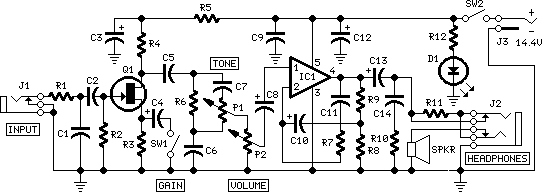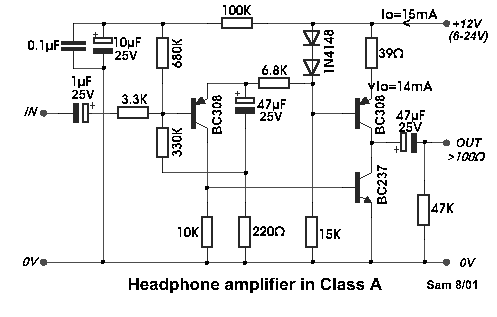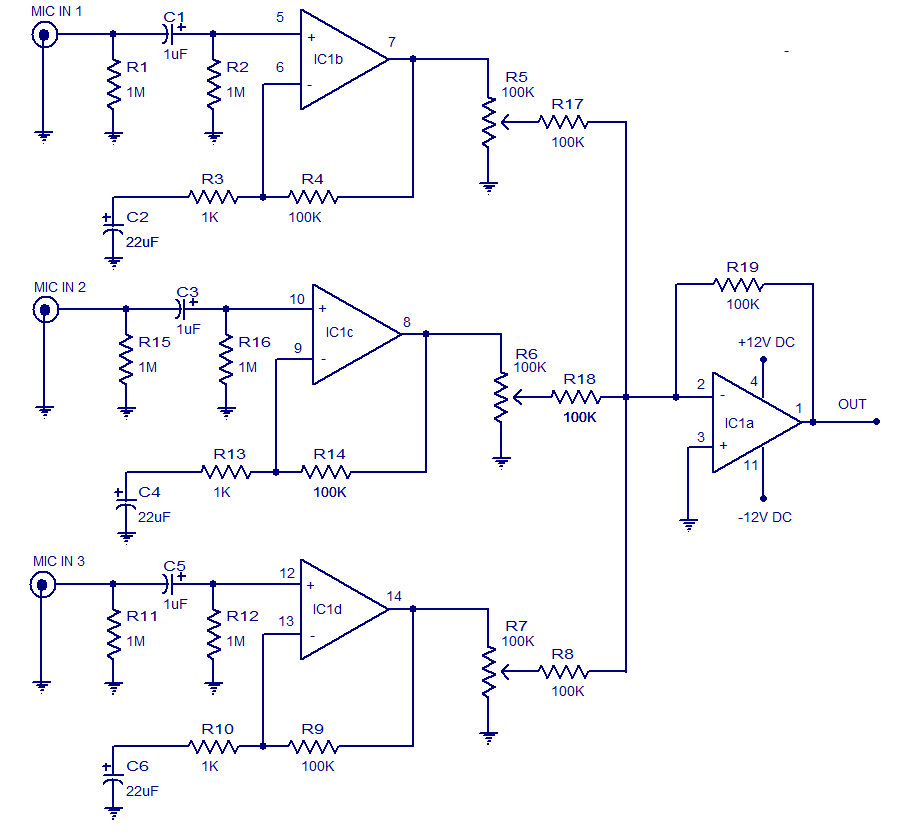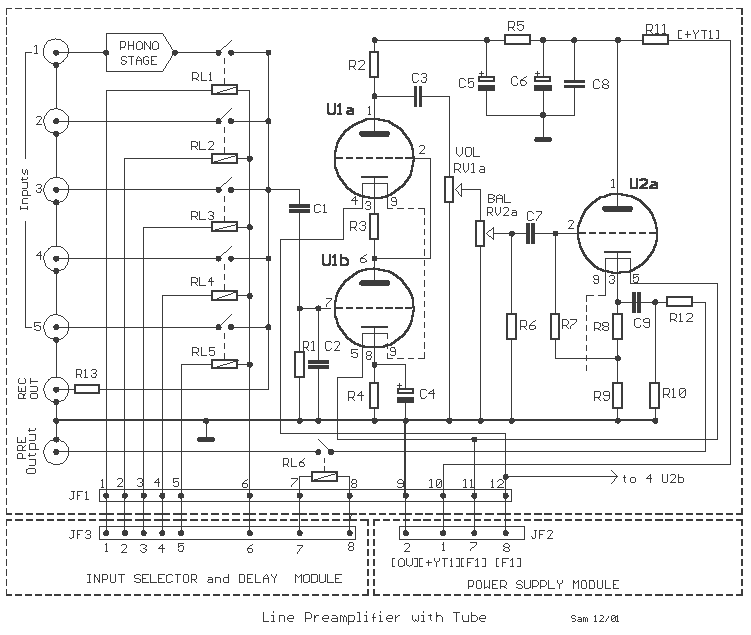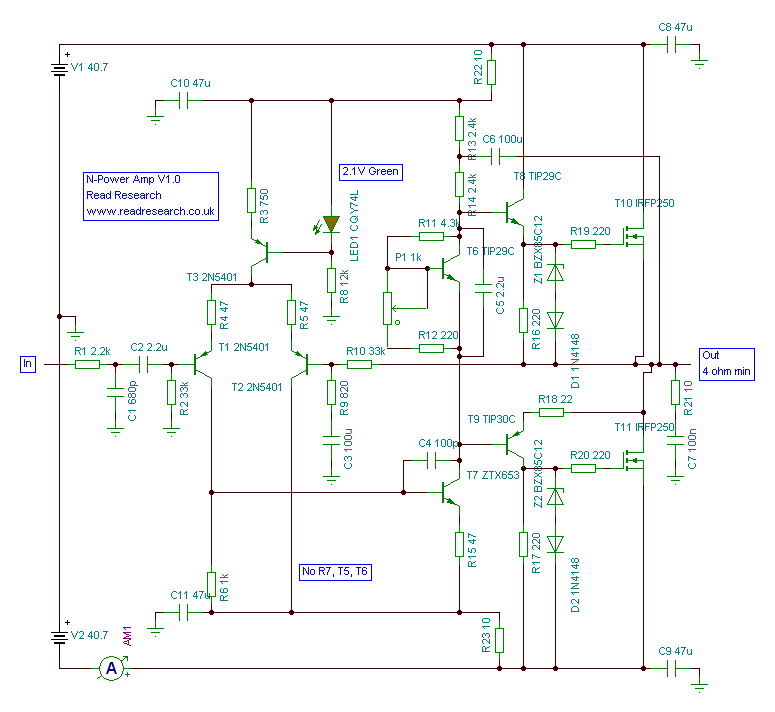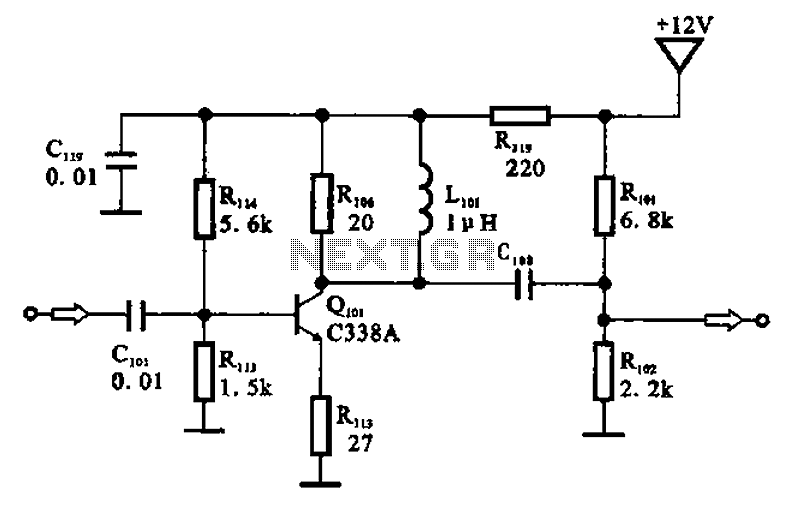
LM317 Audio Amplifier
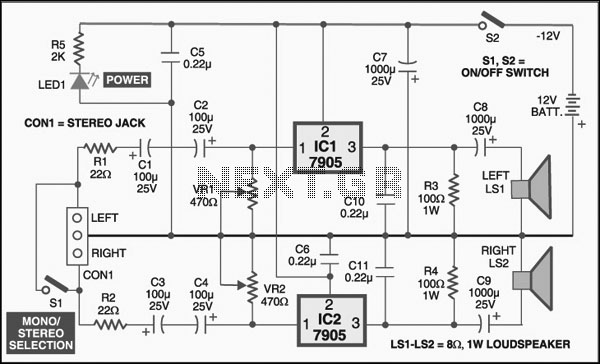
The LM317 integrated circuit (IC) is commonly recognized as an adjustable voltage regulator. However, it also has the capability to function as an audio amplifier, specifically in Class A configurations.
The LM317 can be utilized in audio amplification applications due to its ability to provide a stable output voltage with a low noise level. In a Class A audio amplifier configuration, the LM317 operates in a linear region, allowing for high fidelity and minimal distortion.
To implement the LM317 as an audio amplifier, the circuit typically includes a few essential components. An input capacitor is used to block any DC offset from the audio source, ensuring that only the AC audio signal is amplified. The output stage may require additional capacitors to filter out high-frequency noise and stabilize the output.
The gain of the amplifier can be adjusted by modifying the resistors connected to the adjustment pin of the LM317. By selecting appropriate resistor values, the desired amplification level can be achieved. It is also important to ensure that the power supply voltage is suitable for the LM317's operating range, typically between 3V to 40V, to prevent overheating and ensure reliable performance.
Thermal management is crucial in this configuration, as the LM317 can generate significant heat when delivering higher output currents. A heat sink may be necessary to dissipate the heat effectively and maintain optimal operating conditions.
In summary, the LM317 serves as a versatile component in audio applications, providing both voltage regulation and amplification functionality. Its adaptability makes it a valuable tool for engineers looking to implement audio solutions with high performance and reliability.You probably know that LM317 IC is used as an adjustable voltage regulator, but did you know it can be used as an audio amplifier? This is a class A audio.. 🔗 External reference
The LM317 can be utilized in audio amplification applications due to its ability to provide a stable output voltage with a low noise level. In a Class A audio amplifier configuration, the LM317 operates in a linear region, allowing for high fidelity and minimal distortion.
To implement the LM317 as an audio amplifier, the circuit typically includes a few essential components. An input capacitor is used to block any DC offset from the audio source, ensuring that only the AC audio signal is amplified. The output stage may require additional capacitors to filter out high-frequency noise and stabilize the output.
The gain of the amplifier can be adjusted by modifying the resistors connected to the adjustment pin of the LM317. By selecting appropriate resistor values, the desired amplification level can be achieved. It is also important to ensure that the power supply voltage is suitable for the LM317's operating range, typically between 3V to 40V, to prevent overheating and ensure reliable performance.
Thermal management is crucial in this configuration, as the LM317 can generate significant heat when delivering higher output currents. A heat sink may be necessary to dissipate the heat effectively and maintain optimal operating conditions.
In summary, the LM317 serves as a versatile component in audio applications, providing both voltage regulation and amplification functionality. Its adaptability makes it a valuable tool for engineers looking to implement audio solutions with high performance and reliability.You probably know that LM317 IC is used as an adjustable voltage regulator, but did you know it can be used as an audio amplifier? This is a class A audio.. 🔗 External reference
